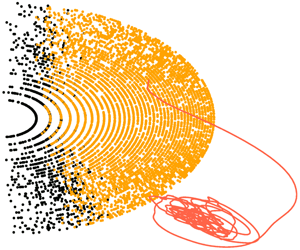Article contents
A probabilistic protocol for the assessment of transition and control
Published online by Cambridge University Press: 18 May 2020
Abstract

Transition to turbulence dramatically alters the properties of fluid flows. In most canonical shear flows, the laminar flow is linearly stable and a finite-amplitude perturbation is necessary to trigger transition. Controlling transition to turbulence is achieved via the broadening or narrowing of the basin of attraction of the laminar flow. In this paper, a novel methodology to assess the robustness of the laminar flow and the efficiency of control strategies is introduced. It relies on the statistical sampling of the phase-space neighbourhood around the laminar flow in order to assess the transition probability of perturbations as a function of their energy. This approach is applied to a canonical flow (plane Couette flow) and provides invaluable insight: in the presence of the chosen control, transition is significantly suppressed whereas plausible scalar indicators of the nonlinear stability of the flow, such as the edge-state energy, do not provide conclusive predictions. The methodology presented here in the context of transition to turbulence is applicable to any nonlinear system displaying finite-amplitude instability.
- Type
- JFM Papers
- Information
- Copyright
- © The Author(s), 2020. Published by Cambridge University Press
References
- 3
- Cited by


